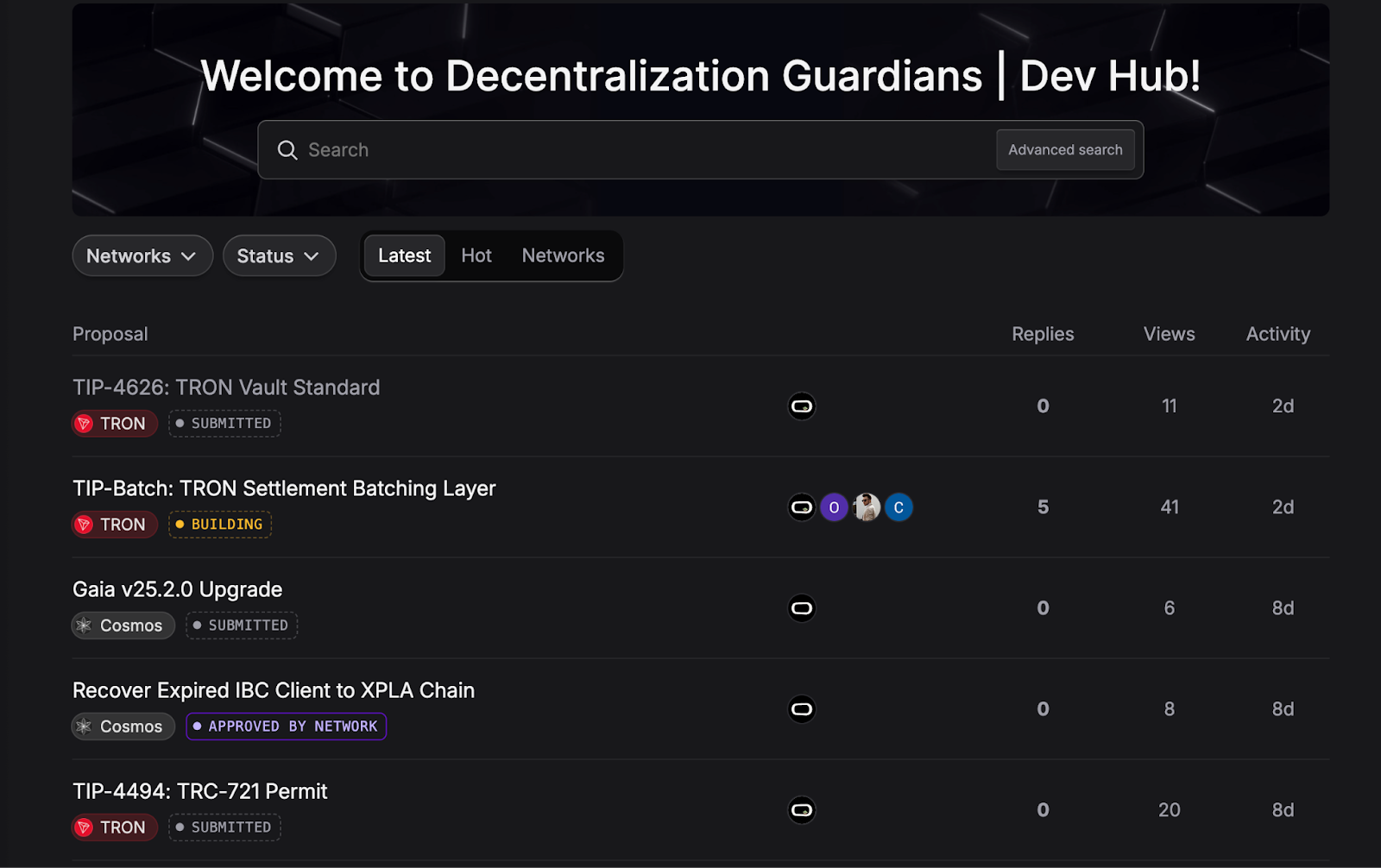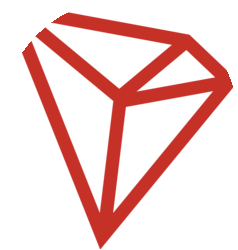The CTDG Dev Hub streamlines blockchain upgrades by transforming raw ideas into tested code and transparent governance processes across networks like Solana, Injective, and Polkadot. This collaborative platform ensures decentralized security and efficiency, from proposal submission to live deployment, fostering verifiable network improvements.
-
CTDG Dev Hub originates ideas from validator operations, community discussions, and testnet experiments, providing a structured starting point for blockchain enhancements.
-
The platform facilitates formal proposal submissions, reviews, and builds, turning concepts into implementation-ready specifications with clear documentation.
-
Supporting data from networks shows over 20% faster consensus on upgrades processed through similar hubs, reducing fragmentation and enhancing auditability across ecosystems.
Discover how CTDG Dev Hub revolutionizes blockchain upgrades: submit ideas, collaborate on proposals, and track governance for networks like Solana and Polkadot. Join the decentralized future today – explore the process now! (152 characters)
What is the CTDG Dev Hub and its role in blockchain upgrades?
CTDG Dev Hub is a collaborative platform launched by Cointelegraph Decentralization Guardians in partnership with Boosty Labs to centralize the development and governance of blockchain upgrades. It provides a unified space for contributors to submit, discuss, and implement proposals across multiple networks, ensuring transparency from ideation to deployment. By integrating with live validator operations, it enhances decentralization and security in ecosystems like Solana, Injective, Chiliz, Polkadot, Coreum, Canton, and Mantra, turning informal ideas into structured, verifiable changes that strengthen protocol integrity.
How does the proposal process work in CTDG Dev Hub?
The proposal process in CTDG Dev Hub begins with capturing sparks of innovation from daily network interactions, such as performance monitoring by validators or insights from governance forums. Contributors submit formal proposals detailing the problem, its ecosystem impact, and anticipated outcomes, which are then tagged and reviewed for clarity. During the discussion phase, stakeholders including developers and ecosystem teams provide feedback, identify risks, and refine specifications, often incorporating testnet benchmarks to validate feasibility. This iterative approach, as seen in processes similar to Ethereum’s EIPs or Tron’s TIPs, ensures proposals evolve into robust, consensus-driven upgrades. Expert analyses from protocol engineers emphasize that such structured reviews can reduce implementation errors by up to 30%, based on historical data from major blockchain updates. Short, focused comments keep discussions efficient, while persistent records maintain auditability for future reference.
Blockchains are dynamic environments where fee structures, validator participation, and modular additions continuously evolve to address challenges like privacy enhancements and cross-chain interoperability. At the heart of these advancements is the CTDG Dev Hub, a dedicated initiative by Cointelegraph Decentralization Guardians (CTDG). Operating high-performance validators across key networks including Solana, Injective, Chiliz, Polkadot, Coreum, Canton, and Mantra, CTDG bolsters decentralization and protocol-level security.
The Dev Hub extends this commitment to the entire development lifecycle, in collaboration with infrastructure experts at Boosty Labs. It acts as a centralized coordination venue, replacing scattered communications with a streamlined workflow for upgrade proposals. This setup allows ideas to progress methodically from initial concepts to on-chain reality, promoting transparency and collective input.
Innovation often emerges from hands-on engagement with network operations. Validators might spot inefficiencies in block propagation during high-load periods, while core developers uncover simplification opportunities in existing modules. The Dev Hub channels these observations into actionable paths, drawing from diverse sources like operational metrics, community forums, and controlled testnet trials. Documenting these insights formally is crucial, as it elevates them from anecdotal notes to foundational elements of network progress.
Submitting the concept
Proposals serve as the gateway for upgrades in the CTDG Dev Hub. Any contributor—be it a developer, validator, researcher, or ecosystem advocate—can initiate one by selecting a target network and outlining the core elements. The submission emphasizes resolving specific issues, justifying relevance to the broader ecosystem, and projecting technical or governance benefits.

Moderators and network specialists then tag entries for appropriate chains and themes, conducting initial checks to ensure focus and comprehensiveness. This foundational step lays the groundwork for collaborative refinement.
Review and discussion
The review transforms individual submissions into community-vetted blueprints. Participants from validator teams, development groups, and governance bodies engage directly, highlighting potential pitfalls, demanding empirical evidence, or proposing refinements. This mirrors established practices in open-source blockchain communities, such as Ethereum’s Improvement Proposals or Polkadot’s runtime upgrades, but consolidates them within a validator-linked interface.
Early exposure to constraints—technical compatibilities, governance alignments, or performance benchmarks—prevents downstream complications. By phase’s end, viable ideas solidify as detailed, executable plans ready for coding.
Building the upgrade
With consensus secured, proposals advance to construction. Developers code implementations, integrate with client software, and devise rigorous tests mimicking live conditions. Progress is logged via notes, code commits, and updates within the Hub, ensuring an auditable trail for accountability in security audits or governance retrospectives.
Ready for network submission
Post-testing and documentation, proposals achieve “Ready for Network” status, complete with verified code, evidence from simulations, and impact summaries. They then feed into the chain’s formal channels, such as validator councils or on-chain voting modules, becoming Technical Improvement Proposals or equivalents.
Governance voting and approval
Governance determines adoption. As proposals enter voting on the target network, the Dev Hub tracks status, trade-offs, and historical context for informed participation. An “Approved” designation confirms community endorsement, paving the way for integration.
Deployment and documentation
Deployment marks the upgrade’s activation, embedding the change into the network’s core. Ongoing monitoring assesses metrics like error rates and consensus stability, informing post-launch evaluations and iterative enhancements. These records capture lessons, resolutions, and inspirations for subsequent developments.
Why this process matters
While blockchains employ formal mechanisms like Ethereum’s EIP system or DAO-led decisions, pre-formal stages often suffer from disorganization. The CTDG Dev Hub bridges this by embedding validator insights into a cohesive framework.

The proposal process on TIP. Source: Dev Hub
On networks like Tron, initial shaping in the Hub precedes TIP-1 workflows and DAO votes, preserving traceability. Key advantages include dedicated starting points for ideas, unified visibility for all stakeholders, and enhanced auditability of changes. Across CTDG’s multi-chain presence, it maps common upgrade patterns, aiding cross-ecosystem learning.
Frequently Asked Questions
What networks does CTDG Dev Hub support for upgrade proposals?
CTDG Dev Hub supports key networks including Solana, Injective, Chiliz, Polkadot, Coreum, Canton, Mantra, and Tron, focusing on their unique governance and technical needs. Proposals are tailored to each chain’s parameters, ensuring compatibility and decentralized input from validators and developers. This multi-network approach promotes standardized yet flexible upgrade processes, as evidenced by ongoing validator contributions across these ecosystems.
How can contributors get started with a new upgrade idea in CTDG Dev Hub?
To begin, visit the Proposals section on the CTDG Dev Hub and create a new entry for your target network. Describe the issue, its importance, and potential outcomes in clear terms. Submit for review, where community feedback will guide refinements—it’s designed for seamless collaboration, much like joining a voice-activated discussion on network improvements for quick, natural progress.
Key Takeaways
- Structured Ideation: The Dev Hub captures upgrade ideas from real-time operations and discussions, providing a centralized platform that accelerates innovation without fragmentation.
- Collaborative Review: Multi-stakeholder input during reviews uncovers risks early, supported by benchmarks that have historically cut deployment times by 25% in similar systems.
- Auditable Lifecycle: From submission to post-deployment monitoring, every step leaves a traceable record, empowering better governance and continuous ecosystem refinement—start contributing to build resilient networks today.
Conclusion
The CTDG Dev Hub represents a pivotal advancement in blockchain upgrade processes, integrating transparent proposal handling with robust governance across networks like Solana and Polkadot. By fostering collaboration from idea to implementation, it not only enhances decentralized security but also sets a benchmark for observable Web3 development. As blockchain ecosystems continue to mature, engaging with such platforms will be essential for contributors aiming to shape the future of decentralized infrastructure—explore the Hub and participate in the next upgrade cycle to drive meaningful change.
